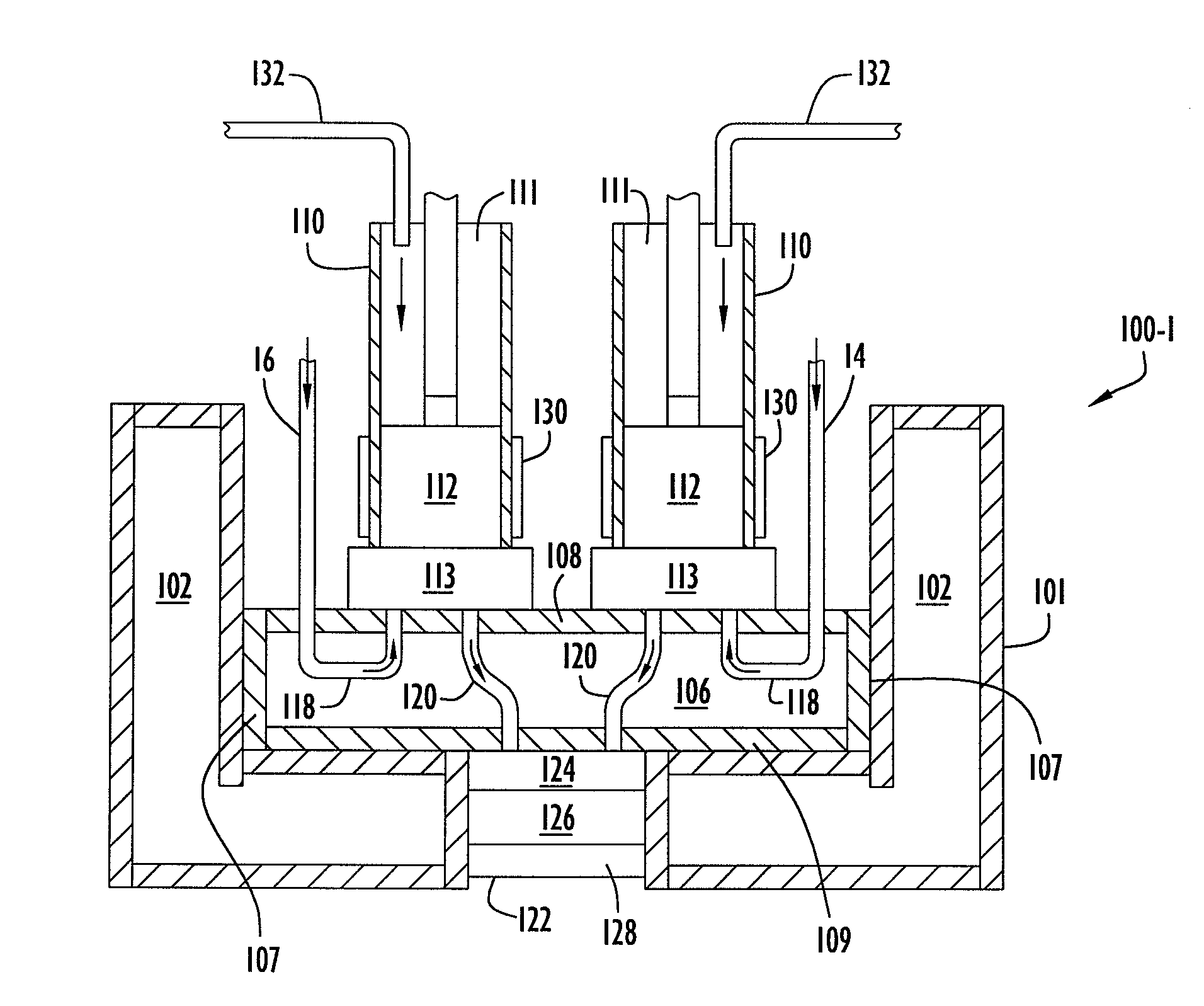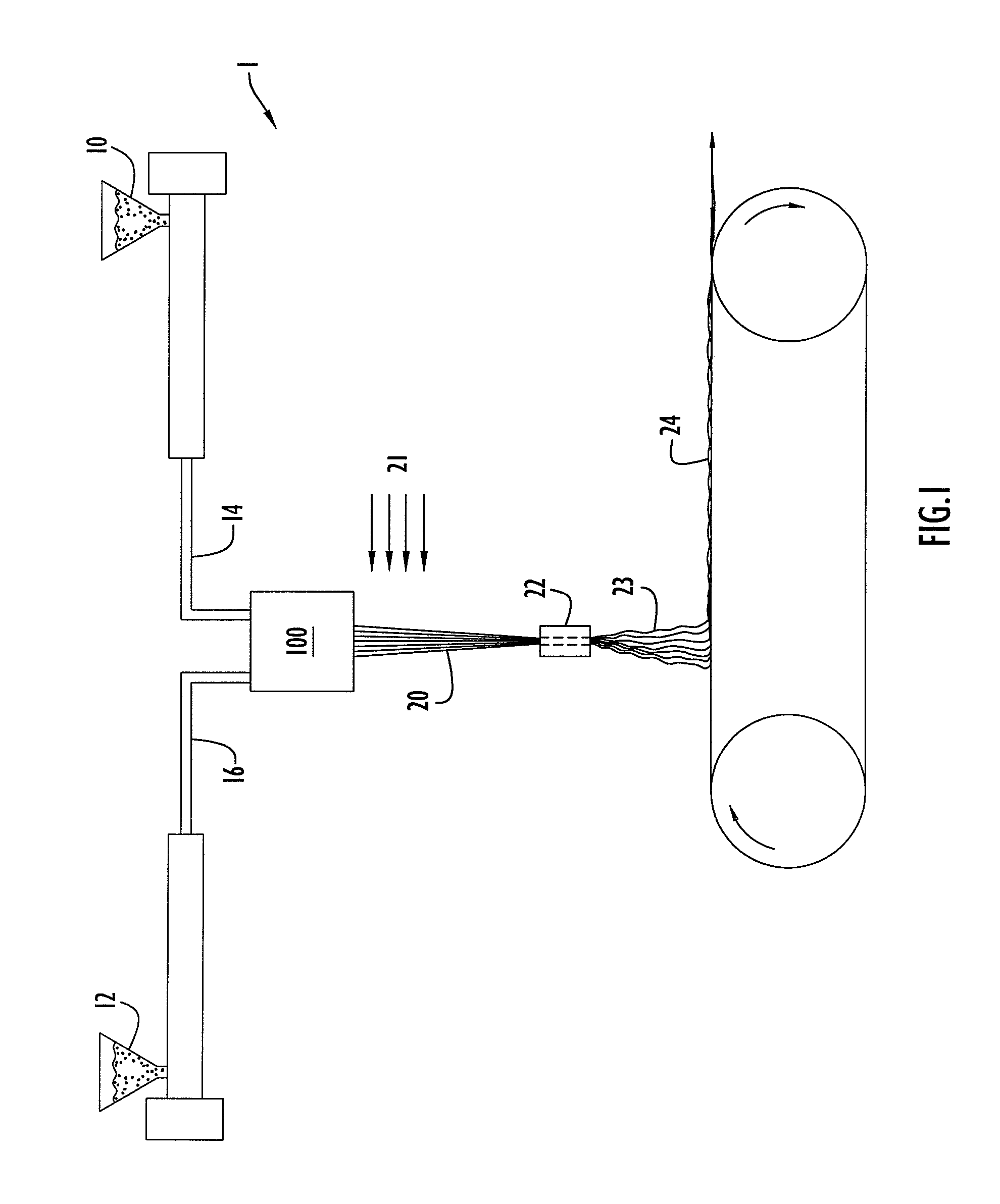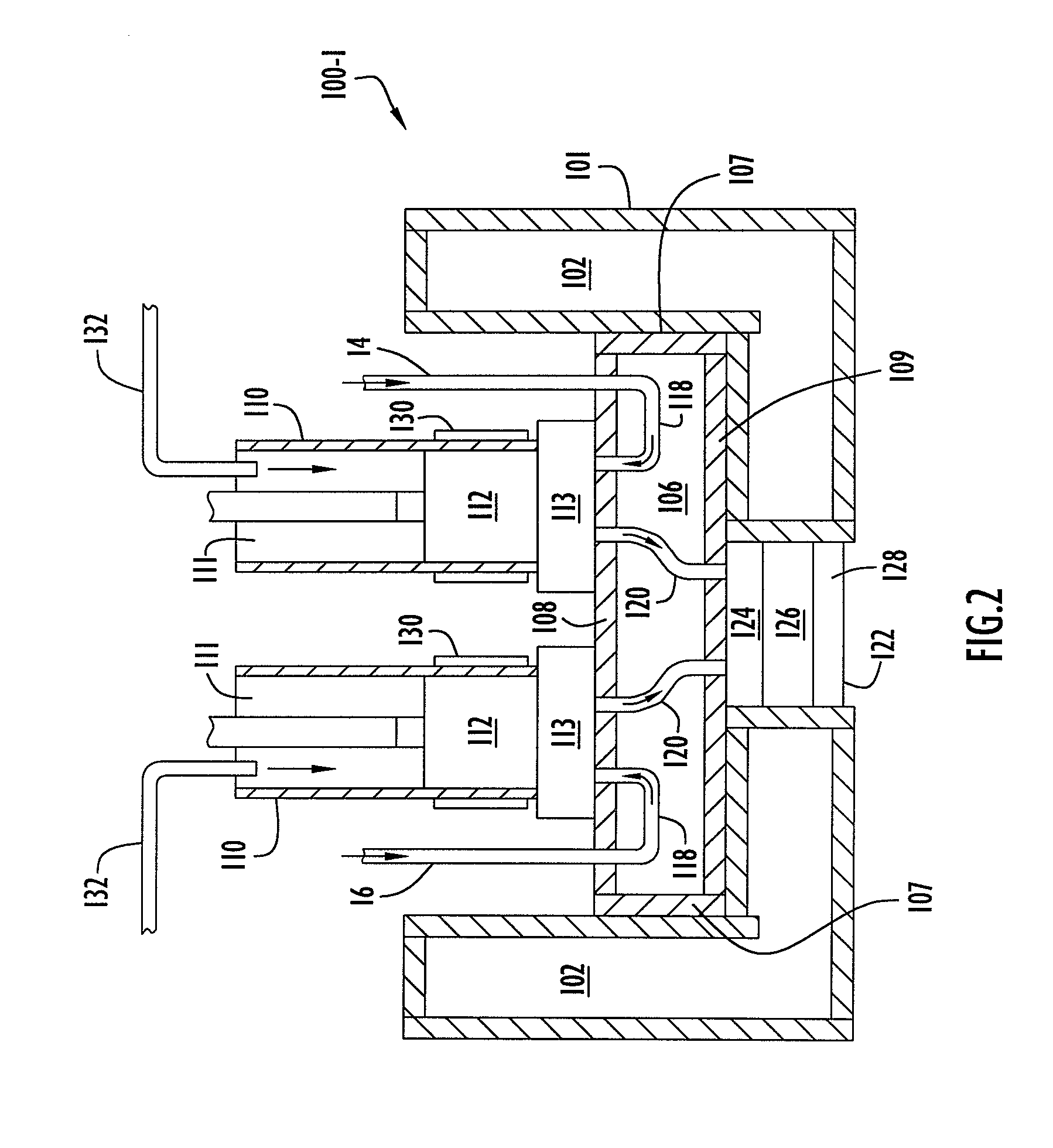Temperature control system to independently maintain separate molten polymer streams at selected temperatures during fiber extrusion
a temperature control system and temperature control technology, applied in the field of equipment, can solve the problems of not allowing independent control of polymer temperature and negatively affecting the formation of plural component fibers, and achieve the effect of facilitating independent control of temperatur
- Summary
- Abstract
- Description
- Claims
- Application Information
AI Technical Summary
Benefits of technology
Problems solved by technology
Method used
Image
Examples
Embodiment Construction
[0024]In accordance with the present invention, a temperature control system for a fiber extrusion system is provided for processing two or more molten polymer streams so as to substantially and independently maintain each molten polymer stream at a selected temperature prior to and during formation of extruded polymer fibers. The temperature control system may be utilized in any fiber extrusion process including, without limitation, spunbond and meltblown systems. In addition, the temperature control system may be utilized in combination with a fiber extrusion process to form any type of mono and / or plural component fibers with any selected cross-sectional geometries including, without limitation, side-by-side, sheath / core, islands-in-the-sea, segmented pie, ribbon-shaped, multi-lobed, etc.
[0025]An exemplary fiber extrusion process is illustrated in FIG. 1, in which the temperature control system of the present invention is combined with a spunbond system. Spunbond system 1 include...
PUM
| Property | Measurement | Unit |
|---|---|---|
| exit temperature | aaaaa | aaaaa |
| exit temperature | aaaaa | aaaaa |
| temperature | aaaaa | aaaaa |
Abstract
Description
Claims
Application Information
 Login to View More
Login to View More - R&D
- Intellectual Property
- Life Sciences
- Materials
- Tech Scout
- Unparalleled Data Quality
- Higher Quality Content
- 60% Fewer Hallucinations
Browse by: Latest US Patents, China's latest patents, Technical Efficacy Thesaurus, Application Domain, Technology Topic, Popular Technical Reports.
© 2025 PatSnap. All rights reserved.Legal|Privacy policy|Modern Slavery Act Transparency Statement|Sitemap|About US| Contact US: help@patsnap.com



